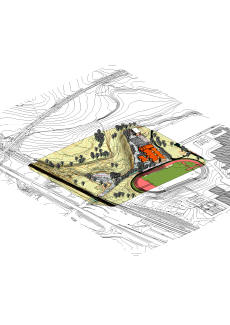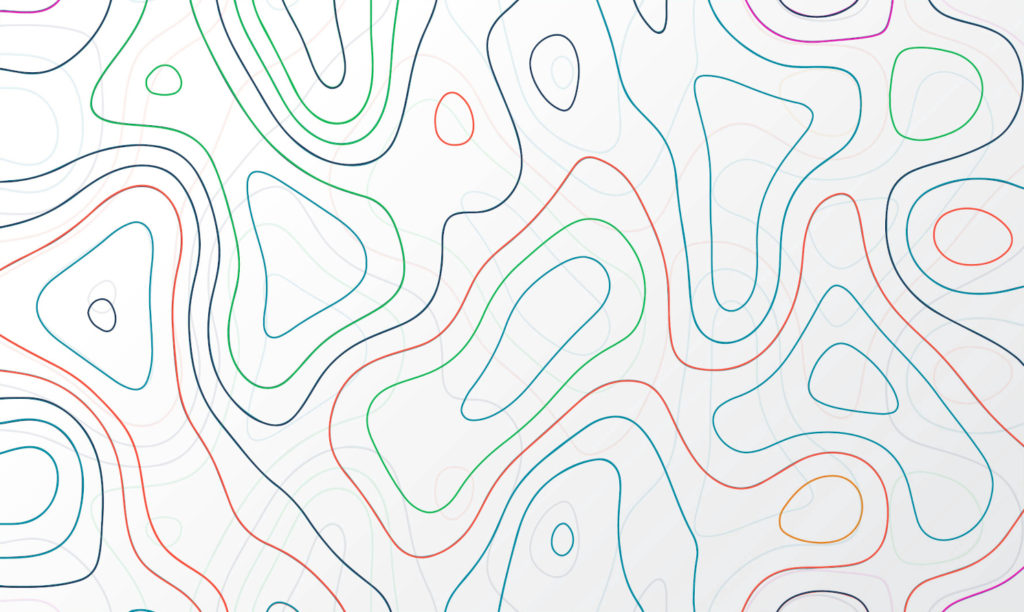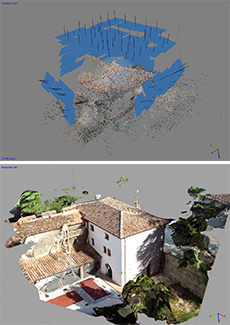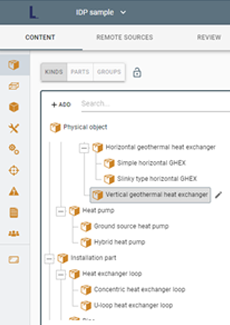We are developing a complete set of geothermal retrofitting project management tool-chains.
This set of tools will be in retrofitting operations and integrated management framework (IDDS), ICT tools for ground research and worksite monitoring, BIM-enabled methods, and tools for the correct selection and design of geothermal-based retrofitting (a benchmarking tool for geothermal-based heating and cooling systems and a design tool for geothermal heta exchangers.
GEOBIM

GEOBIM platform
Product & Service
Partner: IDP
Description
The Innovation
The Geofit Approach
Where will be it tested?
Description
The GeoBIM platform provides a virtual environment where geothermal systems’ models and geographical information live together. The platform makes possible to put in place relevant geothermal information together with the 3D models coming from CAD designs and BIM methodology including ifc standards, with the aim to better understand how geothermal assets (boreholes, Geothermal Heat Exchangers and Heat Distribution Systems) and the building envelope (BIM building model) interact within geographical context.
The Innovation
The tool assembles in one platform, different data objects and linked information and is the first of its kind that is specifically tailored for geothermal building retrofitting. It can bring together site inspection as seismic analysis information, ground geothermal analysis (TRT) data, and BIM models. By integrating information with merging processes, the potential value of GEOBIM goes beyond the state of the art in the BIM context, is an innovative paradigm transforming energy efficiency and building planning, heating assets installation and management, and operation monitoring, maintenances and repair.
The Geofit Approach
GEOFIT project provides a unique opportunity to integrate geothermal, geotechnical, seismic, and boreholes information (Geographical context) with the retrofitting assets like enhanced geothermal systems, heat exchangers and heat distribution elements. This will be the first domestic application of the assets’ management tool and the GEOFIT consortium can test it in five different demonstration sites. The results can be exploitable in real world applications and also, within a scientific and technical context providing evidences to the BIM and BuildingSMART communities. From this approach IDP considers possible to reach the market in a wide spectrum of applications.
Where will be it tested?
Yes. The platform will be tested with the different pilots’ retrofitting projects.

GeoBIM digital twin models of pilot sites as case study examples
Models
Partner: IDP
Description
The Innovation
The Geofit Approach
Where will be it tested?
Description
By creating a GEOFIT digital twin of the geothermal retrofitting project, insights about how to improve operations, increase efficiency or discover an issue are all possible before it happens to the assets duplicating in the real world, in the GEOFIT case, we refer to the whole geothermal systems developed and installed. The lessons learned from the digital twin can then be applied to the original system with much less risk and a lot more return on investment.
The Innovation
GEOFIT DTwins will be useful for creating a new paradigm in the retrofitting projects which exploits the potential of digital twin technologies. Digital twin technology was included on Gartner’s Top 10 Strategic Technology Trends for 2017 and 2018. The DT models of the pilot sites provide clear examples and case studies that can form the basis of any future business development opportunity for GEOFIT exploitation activities.
The Geofit Approach
Availability of digital twins for the five GEOFIT project pilots which represent various types of buildings and which use various types of geothermal retrofitting technologies.
Where will be it tested?
The tool shall be validated during the information exchange processes in the different development stages of the project.

Energy Demand Calculation Engine (EDCE)
Software tool
Partner: EURECAT
Description
The Innovation
The Geofit Approach
Where will be it tested?
Description
Software tool that can calculate accurately and rapidly (in terms of seconds) the annual energy demand of a given building, based on its architectural characteristics, climatic conditions and operation profiles. The EDCE tool is based on an energy simulator combined with mathematical models that describe the correlations between the buildings´ characteristics and their energy requirements, permitting to accurately calculate the energetic behaviour of a given building under specific operation and climatic conditions. Furthermore, the structure of the proposed tool permits its integration into BIM platforms (using standard open protocols), allowing the bidirectional transfer of information.
The Innovation
The possibility to have an accurate prediction of the building demand, without elaborating a detailed building model, allows a more adjusted design of the HVAC installation, as well as the ground boreholes, with a smaller investment. It is also a tool to evaluate retrofitting actions to be performed in buildings. The major advantage is the small investment on time, skilled personnel and computing power.
The Geofit Approach
The EDCE tool development has been started previously in Eurecat as an ESCOs pre-investment analysis tool. During the GEOFIT project, a software gateway is developed in order to connect the tool with a BIM project, and to be able to extract and exchange data between the input and outputs of the EDCE. Besides the tool has been adapted for the project requirements, such as schools, universities, or other public buildings. The envisioned outcome of the project is an energy forecast tool which can automatically perform energy predictions for buildings included in BIM projects, with an accurate and quick-to-obtain results of energy demand of a building.
Where will be it tested?
The operability of the tool will be validated on the GEOBIM platform. The demand forecasting engine will be validated through pilot plants project data.

Digitalization services for geothermal retrofitting
Service
Partner: R2M
Description
The Innovation
The Geofit Approach
Where will be it tested?
Description
Knowledge, methods and the development of services related to the use of digitalization technologies for geothermal retrofitting (drone, matterport, point analysis cloud software, CAD to BIM software).
The Innovation
One theme in GEOFIT is the use of a digital twin environment. This requires digitalization services (e.g. the data capture that enables the digital twin). Another theme is geothermal retrofit design and yet another geothermal retrofit implementation. Both phases (design and implementation) can be facilitated by digitalization services. Such services may be an enabling technology to increase the demand for geothermal retrofitting.
The Geofit Approach
Drone technologies are being utilized to construct point clouds and for infrared overflights (outdoor digitalization). This information can be utilized to facilitate the assessment of envelope losses, volumes, state of structure, area for boreholes and progress of work. Laser scanners and the Matterport technology (image based) are being utilized for indoor digitalization. Indoor digitalization can be utilized to facilitate the (cost efficient) construct of BIM models. Digitalization also helps with communication and with the control of construction/retrofit processes (before/after/in progress, quality control, documentation).
Where will be it tested?
It will be tested in all pilots.

BIM libraries and management tool for EGS/HEX components
Product & Service
Partner: IDP
Description
The Innovation
The Geofit Approach
Where will be it tested?
Description
GEOFIT project focuses part of its results on the development and implementation of virtual management tools based on BIM methodology. BIM provides the capability of virtually analysing GEOFIT retrofitting projects by integrating both, geographical information and 3D models. Environment, building envelope and systems models are digital objects associated with computable graphics, parametric rules and data attributes which may be managed, shared and exchanged in an interoperable way. Object oriented libraries are crucial to reach this complex working environment. This result is based on the implementation of a Library Management tool to allow sharing objects contained in the library in open standards minimizing multiple and replicant work during data exchange processes, maintaining object integrity and semantics.
The Innovation
The GEOFIT object type library (OTL) enables to organize and implement a conceptual description of the different assets (real world and models) and their properties. It can be used to reach standardization of information (common understanding of the assets), get integration of other information assets defined in different formats or external standards, and finally, enable information and data exchange specifying what information should be delivered and how according to the exchange requirements.
The Geofit Approach
“GEOFIT project makes possible to test a new methodology to facilitate and improve complex information exchange processes that in most of the cases require of huge amount of operations (emailing, share-points, ftp protocols, etc). Within this context, the Object Type Library makes possible to manage:
Working spaces (demo-sites) information
Physical objects
Activities (design, construction, installation, handover, etc.)
Parameters (objects attributes)
Functions (display, monitoring, simulate, etc.)
Actors (different disciplines involved)
Documents (objects and assets information are available in large amounts of technical documents)
Geometries and levels of detail (objects definition)
From this approach IDP considers possible to reach the market in a wide spectrum of applications.”
Where will be it tested?
The tool shall be validated during the information exchange processes in the different development stages of the project.
Efficient ICT systems

Methodology for the integration of geothermal assets smart grid
Knowledge & IP
Partner: ILECO
Description
The Innovation
The Geofit Approach
Where will be it tested?
Description
Consideration of geothermal assets within a decentralized smart grid where prosumers have access to various energy markets.
The Innovation
A smart geothermal concept can do three things to interact with the smart grid: 1) The timing of energy use can be adapted/scheduled to off-peak periods of time and availability of local produced energy, 2) Use can be curtailed upon signals from the grid to reduce grid congestion and 3) Geothermal systems can be used as energy sinks (e.g. putting energy into the ground or energy into the areas they heat/cool) at moments of energy surplus on the grid (e.g. negative energy pricing). This is innovative because 1) smart grid and demand response scenarios are not state of the art widely across Europe and 2) Geothermal systems are typically not considered in a smart grid context. This is exploitable because smart grid scenarios can improve the return of investment of geothermal systems and if specific business cases are identified (such as swimming pools in demand response markets), it can lead to the increased competitiveness of geothermal systems over heating/cooling alternatives.
The Geofit Approach
Smart cloud-based control systems are developed in WP5 as a technology/product/service. In parallel, business case development is conducted to best understand and disseminate the scenarios where such systems have the highest economical impact. This ER captures that knowledge for dissemination and use purposes.
Where will be it tested?
Knowledge developed in part via case study of NUIG pilot.

BEMS – EcoSCADA (with Geothermal)
Product & Service
Partner: ILECO
Description
The Innovation
The Geofit Approach
Where will be it tested?
Description
Innovative building energy management system software (BEMS) specific to the smart grid (flexibility management) to be leveraged by aggregators in partnership with building stakeholders to participate in demand response programs and within various energy markets which includes geothermal as a controllable / managed asset.
The Innovation
“BEMS is an intelligent- cloud based- control system used to enable the new EGS as a building asset. This approach enables the universal building systems to be optimized with the aim to optimize the energy consumption. BEMS incorporates an intelligence layer that enables automation of current and future building performance based on specified parameters, and serves as a test-bed for automated optimization algorithms. BEMS expanded functionalities include:
• Hardware: synergy gateway (i) able to communicate in real time with devices, (ii) connected to all ICT systems, and (iii) connected to the web;
• Software: open informatics platform to implement algorithms controlling HVAC, lighting and other appliances as developed with the modeling environment, building energy performance models and decision support tool (as forecasters) for energy optimization integration into the BEMS.
• Database for storage sharing information with all the algorithms: monitored data and technical specifications of equipment and building components.”
The Geofit Approach
ER#21 is an updated version of i.LECO EcoSCADA specifically considering geothermal assets. Currently, it is already deployed in different projects at the pre-commercial level with different services enabled per project/customer.
Where will be it tested?
Yes. Focus on NUIG pilot due to business case of swimming pool.

COMSA Intelligent BEMS
Product & Service
Partner: COMSA
Description
The Innovation
The Geofit Approach
Where will be it tested?
Description
Development and use of GEOFIT building control algorithms in COMSA commissioned BEMS hardware and software (when providing the BEMS) and when providing ESCO or energy management services.
The Innovation
COMSA provides BEMS, energy management services and ESCO services. Participation in GEOFIT is intended to make these products/services more competitive via increased expertise and competency in GEOTHERMAL systems.
The Geofit Approach
COMSA is providing the BEMS system to San Cugat. This system will embed project developed algorithms specific to GEOFIT technologies and with functionalities for the smart grid.
Where will be it tested?
Yes with focus on Sant Cugat.

Design & Implementation Guidelines
Knowledge & IP
Partner: COMSA
Description
The Innovation
The Geofit Approach
Where will be it tested?
Description
Guidelines for smart geothermal retrofitting (e.g. the implementation of GEOFIT systems and concepts). The guidelines will be provided considering type of building, type of system, type of soil, surrounding environment and level of post-retrofit performance to be achieved.
The Innovation
This ER provides a one-stop shop for the collective knowledge developed in GEOFIT. It is delivered at M36 such that it can be utilized in the last 12 months of dissemination and communication activities.
The Geofit Approach
A series of documents will be made available with the intent to facilitate the uptake and choice of geothermal systems and as a result to create demand for GEOFIT partner products and services.
Where will be it tested?
Knowledge developed via GEOFIT work program at large to include pilot activities.

IDDS Methodology & Framework for Geothermal Retrofitting
Method
Partner: NOBATEK
Description
The Innovation
The Geofit Approach
Where will be it tested?
Description
A collaborative, integrated and holistic methodology and framework for the design and delivery of (geothermal retrofitting) projects that encompasses interoperable technologies, integrated processes and collaborative people.
The Innovation
The state of the art is typically design-bid-build in which a contractor designs, a stakeholder puts out for contract and then a lowest-cost bidder is selected for implementation. This can result in gaps, errors and efficiencies in the design and construction process. Using IDDS (Integrated Design and Delivery Solutions), all stakeholders can be connected across all phases of the project life-cycle and empowered by 21st century technologies (BIM and others). Such methods can lower life-cycle costs by increasing efficiencies and by reducing errors. Such methods can also increase the uptake of renewable energy technologies and social acceptance by involving stakeholders and end users in the collaborative process.
The Geofit Approach
In GEOFIT, IDDS is applied to Geothermal Retrofitting (identify the team, define the project phases/roles, and develop the collaborative workflow schedule). Applied to the GEOFIT pilot sites, the geothermal stakeholders (constructors, clients, designers and managers) are identified, eight steps in the retrofitting process are identified and then the role of each stakeholder in the step of the process is mapped out in a collaborative workflow. Questionnaires, workshops, surveys, in-progress checkpoints, satisfaction checks are a part of the IDDS process. The results of this work are in D1.1 (IDDS), D10.5 (Stakeholder Workshops) and pilot summary and evaluation deliverables of WP7.
Where will be it tested?
It will be applied at each pilot via a series of workshops and collaborative design/implementation processes.